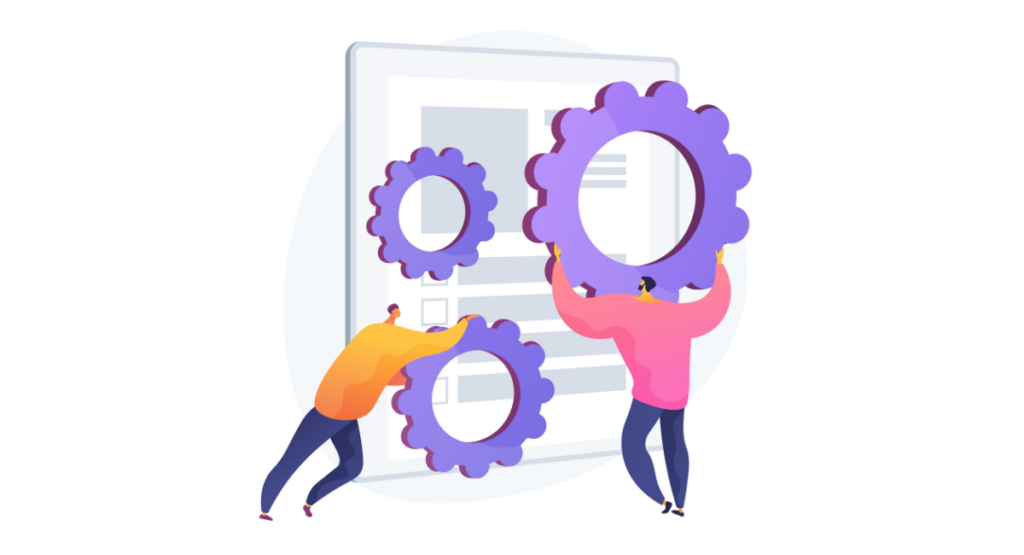The concept of software build is one that is taken for granted in most cases; however, among software developers, it is considered one of the sophisticated systems that make up development.
The term software build, in the context of software development, describes the process whereby source code files are translated into executable elements with capabilities for working in a computer or server.
In simpler terms, it is the process of creating an applicatory software or running executable binary code files after compiling the written, interpreted source code. Understanding this process is very important for developers, as this shapes the end product's efficiency, functionality, and reliability.
This primary stage of software delivery is crucial in the creation of a theoretical design by the developer, resulting in a practical implementation of it that will satisfy the end-user and, of course, comply with the required quality standards.
Understanding Software Builds

What Is Software Build?
A build system is basically the construction mechanism of taking source code, testing, and converting it into a standalone form capable of running on a given machine or server.
This involves the process of transforming the source code into machine-executable form, collecting the different parts of a project, and managing interdependencies.
The major focus is to transcribe the large body of source code, understood by humans, into a form executable by a computer. This transformation process is critical to the testing and deployment phases downstream.
Components of a Software Build
The software build process comprises several crucial components:
- Source Code: The raw code written by developers in various programming languages.
- Dependencies: Libraries or other programs required for the proper execution of the software.
- Build Scripts: Automated scripts that handle tasks such as compilation, deployment, and testing.
- Compiler: Software that translates source code into executable code.
- Artifacts: The output of the build process, usually in the form of executable files or binary code.
- Build Tools: Tools such as Make, Maven, and Jenkins that automate various aspects of the building process.
Importance of Software Builds

Ensuring Product Quality
The software build process is critically attached to product quality. Each build acts as a checkpoint where the code gets reviewed, tested, and examined for detecting errors and security flaws.
In fact, automated builds are able to embed continuous tests that make it very possible to detect and correct the error cycle quite well and quickly.
Therefore, a regular building process guarantees a steady and operating in a proper way so that we could refer to quality assurance as an absolutely important step of the software building process.
Facilitating Collaboration among Developers
For any team especially large ones, or projects in which multiple members work on a feature builds are the lynchpin of working together. It smoothens the integration of work between different programmers and ensures uniformity in the resultant product.
This makes sure whatever anyone does won't wreak havoc on what another is doing, by continuously integrating the effects of various updates. That's the kind of orchestration that guarantees harmony and productivity; the result has to be good enough.
Enhancing Version Control
This can be achieved hand in hand with the build process. It is likely that each build will or can be given a version number so that iterations of the software can be easily controlled.
The version numbers help trace the software, roll it back to the previous version, and trace the evolution. This structured versioning helps in moving effectively through the lifecycle of the software and managing releases with precision and control.
Tools and Techniques in Software Builds
Automated Build Tools
Especially considering modern software development, it cannot so well do without automated build tools while simplifying and speeding up the build process for development teams.
These tools automate the tasks that accompany coding, such as compilation, packaging, and many other optimization processes. Examples include Apache Maven, Gradle, and Jenkins.
Such tools help reduce human mistakes and reduce efficiency since, with the help of them, packs of repetitive, predefined command sequences to be used in one batch are created. Including these tools in the development lifecycle assures build software consistency and reliability.
Continuous Integration
Continuous integration is a development practice where a team of developers integrates their codes several times a day. Each integration is verified by building and running automated tests.
The practice is aimed to reduce bugs early, assures the quality of software, and accelerates the process of releases. CI systems such as Jenkins, Travis CI, and CircleCI are among the most popular today.
They maintain a clean build state and keep the feedback loops to the developer, supporting a rather high level of automation.
Building in Different Environments
Setting up the software to build in different environments means the software build gets configured to run in various setups such as development, test, or production settings. This helps assure that the software will run as it is expected to, given varying conditions.
This includes managing different configuration settings, such as database URLs and credentials, and even handling different operating systems with their various hardware specifications.
These are great tools of this kind in helping to carry out such an operation: Docker, which aids in the creation of reproducible and consistent configurations, and then all the configuration management software, for example, Puppet and Chef.
Challenges in Software Build Processes
Managing Dependencies
One of the challenges in building software is the management of dependencies. Dependency management keeps an updated list of the components needed and their compatibility with software under development.
There is a problem with undeclared dependencies, or their newer version breaks the compatibility. Tools like npm for JavaScript and Maven for Java help manage these dependencies by automatic downloading and integrating into the build.
Identifying and Fixing Build Failures
Build breaks are common and can be caused by many different problems, like typical code errors, dependency problems, environmental issues etc. Sometimes it can be quite time-consuming to identify the real cause for a build break.
So actually running builds on a regular base within a CI environment allows catching failures quickly. This is when logs and automated tests chime in as both tools for diagnosis and repair, to fix such problems in short order and thus ensure stability and smooth progress in project development.
Integrating Third-Party Libraries
The integration of third-party libraries into a software project is going to bring a whole host of benefits to it, but it simultaneously introduces a number of risks involving security vulnerabilities and issues related to license compliance.
The biggest concern is to have those libraries well documented, to see that they are actively maintained, and to comply with the license of the project.
It will be essential to use vulnerability and compatibility scanner tools like OWASP Dependency Check or Black Duck to take this risk away and to assure the build of being secure and legal.
Best Practices for Successful Software Builds
Establishing a Clear Build Process
For a software build process to be successful, clarity and consistency are key. It is crucial to establish standardized procedures that are followed by all team members.
Starting with a clear definition of the source code repository, build tools, and environment settings, each component should be explicitly outlined.
Regular updates and revisions of the process documentation are also important to accommodate changes in technology and project requirements.
A well-defined process not simply streamlines the build but also minimizes errors, ensuring that the builds are stable and predictable.
Regular Testing and Quality assurance
Implementing a rigorous testing routine is vital for maintaining the health of the software product. This includes:
- Unit tests to check individual components for precise operation.
- Integration tests to ensure components work together seamlessly.
- System tests to validate the complete and integrated product.
Quality assurance should occur at multiple stages of the build process to catch and resolve issues early, thereby maintaining the integrity of the final product. Automating tests can further enhance the efficiency and reliability of this process.
Documenting Build Configurations
Documenting build configurations is essential for understanding and reproducing software builds. Detailed records should include version numbers of the software being used, configuration settings, and environment details.
This documentation helps in troubleshooting issues, replicating environments, and onboarding new team members efficiently. Keeping a log of changes made to the build configurations over time also aids in maintaining historical context, facilitating better decision-making and compliance with audit requirements.
Regular updates and access controls on these documents ensure that the information remains relevant and secure.
Book a Demo and experience ContextQA testing tool in action with a complimentary, no-obligation session tailored to your business needs.
Conclusion
The software build process is an essential step in development that solidifies the foundation from which usable applications evolve. By compiling source code into executable applications, developers ensure their products function correctly.
Over time, as projects grow and requirements change, the build process enhances efficiency, quality, and adaptability. Understanding and mastering this phase not only helps in reducing errors but also optimizes performance, leading to successful software deployment and satisfied end-users.
Recognizing its importance, organizations invest significantly in optimizing build processes through modern tools and continuous integration practices, ensuring consistent, high-quality software delivery.
Also Read - Scaling Selenium to infinity using AWS Lambda – Wes Couch & Kurt Waechter
We make it easy to get started with the ContextQA tool: Start Free Trial.
